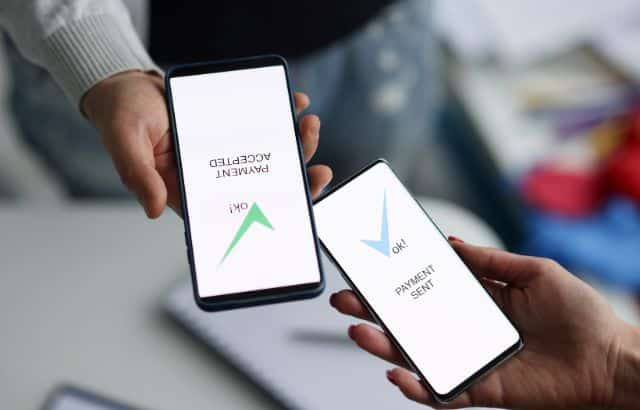Businesses need to think strategically to build lasting relationships with their customers. One of the most powerful tools to achieve this is reciprocity. Simply put, reciprocity is the concept that when someone does something nice for us, we feel compelled to return the favor. This fundamental human behavior plays a crucial role in building customer loyalty and creating positive word-of-mouth—both of which are vital to the success of any business.
In this blog, we’ll explore how reciprocity works, how businesses can leverage it in their marketing strategies, and why it’s crucial for business growth. We’ll also discuss practical examples, the role of a business strategist in executing these strategies, and how to measure success.
Table of Contents
What Is Reciprocity and Why Does It Work?
Reciprocity is deeply ingrained in human nature. It’s a social norm that compels people to return favors when they’ve been given something. For businesses, applying this concept means giving customers something of value first, in hopes of encouraging them to reciprocate through loyalty, purchases, and positive brand advocacy.
The beauty of reciprocity in marketing is that it taps into this innate sense of obligation, which is often subconscious. When a business gives customers something of value—whether it’s a free sample, discount, or useful content—customers are more likely to feel a sense of duty to return the favor by making a purchase or spreading the word about the brand.
Why Does Reciprocity Work?
- Psychological Obligation: When people receive something, they often feel psychologically obliged to give something back. This is why free trials, gifts, and samples work so well in business.
- Trust Building: Reciprocity creates trust. When customers see that a company is offering something for free, they may feel the company is trustworthy and willing to invest in their satisfaction.
- Positive Reinforcement: By providing something of value, businesses reinforce positive feelings towards their brand, fostering loyalty and advocacy in return.
Examples of Reciprocity in Marketing
Here are some concrete examples of how reciprocity can be used effectively in your marketing strategy:
- Free Trials and Samples
One of the best ways to use reciprocity in marketing is by offering free trials or samples. Think about companies like Netflix or Spotify—they offer free trial periods for users to experience their services before committing. This builds a sense of reciprocity. Once users enjoy the experience, they’re more likely to convert to paying customers.Example: A software company offering a free 30-day trial of their platform creates a sense of obligation. After experiencing the value, users are likely to convert to a paid subscription. - Exclusive Discounts or Content
Another way to apply reciprocity is by offering exclusive content or discounts in exchange for something like signing up for an email list or following on social media. This could be a valuable e-book, access to a webinar, or a special discount code.Example: Book Launches—Authors often offer free chapters or exclusive behind-the-scenes content in exchange for email subscriptions, which helps build their list and strengthens their relationship with readers. - Personalized Experiences
Businesses that personalize their offerings based on customer behavior show that they understand and appreciate their customers, making reciprocity more natural. For example, Amazon‘s personalized recommendations create an environment where customers feel they’re receiving something valuable, which drives loyalty and repeat purchases.
How to Apply Reciprocity in Your Marketing Strategy
To effectively implement reciprocity, follow these steps:
1. Identify Ways to Provide Value
Start by thinking about how your business can offer value to customers, without immediately asking for something in return. This could be through helpful resources, product samples, or educational content. Ensure that what you offer aligns with the interests and needs of your target audience.
2. Create Genuine Connections
It’s important that your gestures of reciprocity feel authentic. Customers can easily sense when companies are using reciprocity as a manipulative tactic rather than genuinely seeking to build a relationship. For example, providing excellent customer service or responding to inquiries in a thoughtful and timely manner can show that you value your customers.
3. Leverage Emotional Appeal
Reciprocity thrives on emotional connections. When customers feel valued, they’re more likely to respond with loyalty and positive reviews. For example, sending personalized thank-you notes or birthday gifts can make customers feel appreciated.
4. Use Data to Tailor Your Offerings
A business strategist, like Hirav Shah, might emphasize using customer data to better understand needs and preferences. By customizing the reciprocity you offer—whether it’s personalized discounts or recommendations based on past purchases—you’ll increase the likelihood of a positive response.
The Role of a Business Strategist in Using Reciprocity
A business strategist plays a pivotal role in crafting a reciprocity-driven marketing strategy. Someone like Hirav Shah, often called “The Game Changer,” can help businesses pinpoint where to add value in the customer journey. A business strategist will:
- Analyze Customer Behavior: Using data analytics, strategists help businesses understand customer preferences, which can guide personalized offers and incentives.
- Optimize Marketing Campaigns: Strategists ensure that marketing campaigns incorporate elements of reciprocity, such as free trials, exclusive offers, or helpful resources, all while maintaining brand authenticity.
- Measure and Adjust: Continuously tracking the success of reciprocity tactics allows strategists to tweak campaigns and maximize customer engagement.
Measuring the Success of Reciprocity Efforts
Tracking the effectiveness of reciprocity is crucial for fine-tuning your strategy. Here are a few key metrics to monitor:
- Customer Retention Rates
Higher retention rates indicate that your reciprocity efforts are creating loyal customers who continue to engage with your brand. - Repeat Business
If customers make multiple purchases after receiving a sample, discount, or free trial, it’s a sign that your reciprocity strategies are working. - Customer Satisfaction and NPS
Surveying customers and measuring Net Promoter Scores (NPS) can help gauge how satisfied customers are and whether they’re more likely to recommend your brand. - Social Media Mentions and Reviews
Keep an eye on how your customers talk about your brand on social media. Positive mentions and reviews can be a direct result of the reciprocity you’ve built into your marketing strategy. - Sales Conversion
Track conversion rates from free offers or trials to paying customers to see how effective your reciprocity is in driving sales.
Frequently Asked Questions (FAQs) About Reciprocity in Marketing
Q: How do I ensure that my reciprocity efforts don’t come across as manipulative?
A: The key is authenticity. Make sure your efforts are genuinely aimed at providing value to customers, not just at getting something in return. Be transparent about your offers and avoid pressuring customers into reciprocating.
Q: How do I measure the ROI of reciprocity-driven marketing?
A: Look at metrics such as customer lifetime value, retention rates, and conversion rates. Tracking the impact of free offers or samples on sales and customer behavior will give you a clear picture of ROI.
Q: Can reciprocity be applied in B2B marketing?
A: Absolutely! In B2B marketing, reciprocity can be applied through things like free consultations, valuable industry insights, or tailored solutions that solve client problems. The goal is to build a long-term partnership based on mutual trust and value.
Conclusion
Reciprocity is not just a marketing tactic; it’s a powerful relationship-building tool. By providing something of value to your customers upfront, you foster goodwill, build trust, and pave the way for long-term success. Whether you’re offering free samples, exclusive discounts, or personalized content, reciprocity can help your business thrive. Business strategists like Hirav Shah understand how to integrate reciprocity into your marketing plan effectively, ensuring it drives both customer loyalty and business growth. With the right strategy in place, reciprocity can be your secret weapon for building strong, lasting relationships with your customers.

















